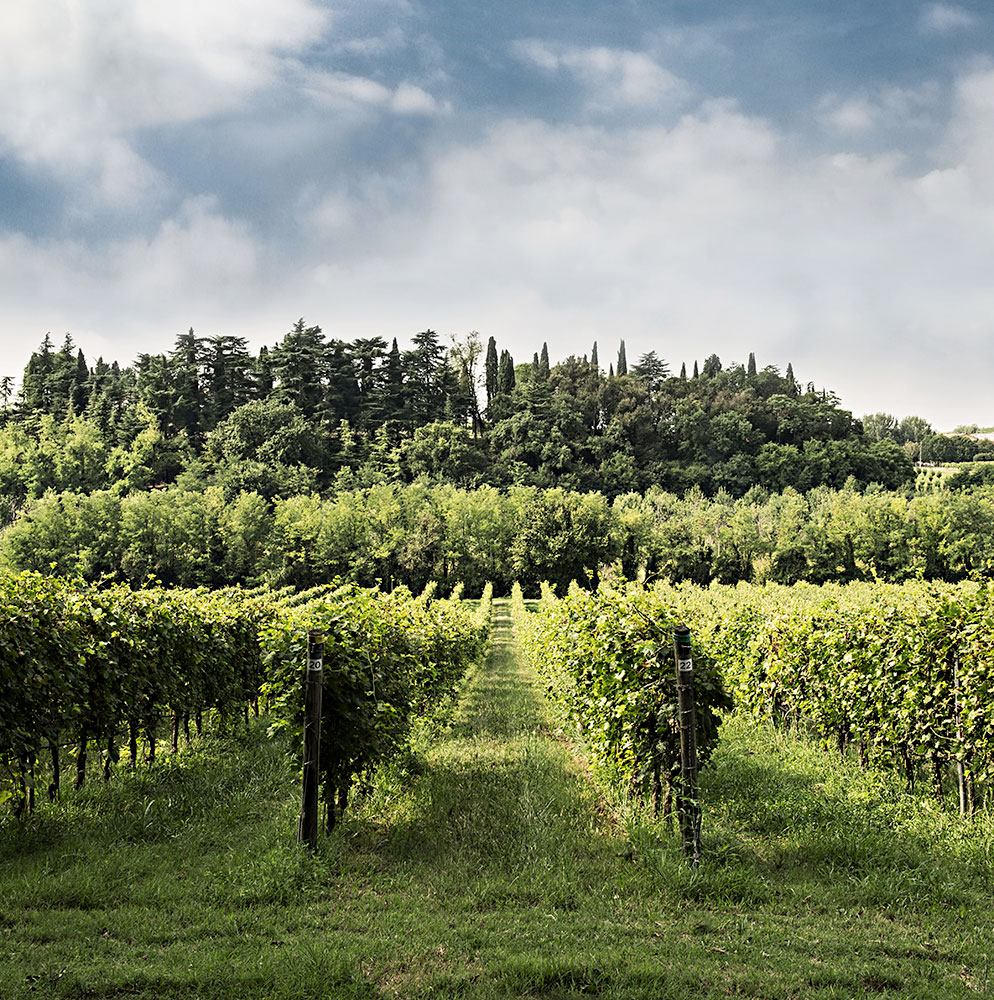Landforms that formed millions of years ago
The landscape around our vineyards features panoramic views of incredible beauty: soft hills no higher than 100 metres interspersed with narrow depressions and wide plains.
These landforms formed millions of years ago due to the glacier that carved out the basin of Lake Garda.

Excellent conditions
The climate is warm, with winters mitigated by the lake, favouring the cultivation of not only grapevines, but also olive trees and cypress.
Precipitation is distributed rather uniformly throughout the year.
With the shape of the landforms, the slopes heat during the day and accumulate cool air at night.
These are perfect conditions for the aromatic development of the grapes.
The vineyards are the heart of our company.
Our priority is that they are healthy and in harmony with the flora and fauna that inhabit them.
Moraine terrain
The land, dry and rocky, is not good for agriculture, but it is excellent for cultivating grapevines. The combination of the soil and climate allows the bunches and shoots to develop sufficiently and ripen properly.
In particular, the moraine land contributes to regular germination of all grape varieties.
Vineyards
The first vineyard acquired by my father at Villa Medici was the famous Ossario, the historical cornerstone of the town of Custoza.
The vineyards extend over various terraces, surrounded by cypresses and interspersed with olive trees. In Custoza, other vineyards can be found slightly further north, in Pescarete, and on the southern slope, in Valbusa.
In the 2000s, along with the decision to invest in developing the winery, I bought 8 hectares of vineyards in Sommacampagna along the path that leads to the enchanting little church of Madonna di Monte, a destination for walks by many villagers.
Here, the vineyard extends over two plots: in Valle del Re, one of the coolest spots in the entire area, and one in Sanpierin, in a slightly hilly area. Finally, the last plot is located in Campagnol, on the plain just 600 metres from the company headquarters.
Viticulture gives us the opportunity and responsibility to protect our land, which is why we have made several choices over the years to reduce our environmental impact.
Years ago, we chose to completely replace chemical weeding with mechanical weeding, mowing between alternate rows in spring and remembering that the vineyard should be not only beautiful and tidy, but also healthy and in balance with the flora and fauna that live there.
Irrigation is managed with drip systems to reduce water consumption.
In recent years we have learned about mating disruption in vine moths from our colleagues in Trentino.
This is a means of controlling the reproduction of pests by spreading hormones that disrupt mating only for the species in question, without interfering with the health of other insects and allowing us to reduce leaf treatments.


